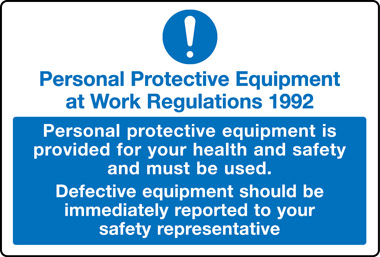The date by which products placed on the GB market must be UKCA-marked has been amended to 1 January 2025.
There are two specific exceptions to this requirement:
- Qualifying Northern Ireland goods can continue to be placed on the GB market bearing the CE marking or CE and UKNI markings after 1 January 2025
- CE-marked PPE that was placed on the UK or EU markets before 1 January 2025 (before the expiry of the Transition Period) and has not yet reached its end user, may continue to circulate on either market until it reaches them
From 1 January 2025,employers should ensure that any PPE they buy bears the ‘UKCA’ mark and complies with Regulation (EU) 2016/425 (as incorporated into UK law).
As well as the UKCA mark on the product (or its packaging/accompanying documentation until 1 January 2028), a supplier would be expected to be able to provide a UK Declaration of Conformity.
PPE that is CE-marked and was placed on the market on or before 31 December 2024, can continue to be used, providing that it is otherwise suitable.
Guidance on selecting and using the right type of PPE
When your risk assessment shows you should provide PPE, you need to make sure you choose the right type to protect different parts of the body:
Eyes
Hazards to the eyes include chemical or metal splash, dust, projectiles, gas and vapour or radiation.
PPE options include safety spectacles, goggles, face screens, face shields and visors.
Make sure the PPE you choose has the right combination of eye protection against various hazards of impact, dust, splash or molten metal. It should also be appropriate for the task and fit the user properly.
Head and neck
Hazards to the head and neck include falling or flying objects, risk of banging the head, hair getting tangled in machinery, chemical drips or splash, climate or extreme temperatures.
PPE options include safety helmets, bump caps and hairnets. Some safety helmets incorporate or can be fitted with specially designed eye or hearing protection. Don’t forget neck protection, for example, during welding.
Always replace head protection if it is damaged.
Ears
Hazards to the ears from noise come from a combination of sound level and duration of exposure. Very high-level sounds are a hazard even with short duration.
PPE options include earplugs, earmuffs or semi-insert/canal caps.
Provide the right hearing protectors for the type of work, and make sure workers know how to fit them. Choose protectors that reduce noise to an acceptable level, while allowing for safety and communication.
Hands and arms
Hazards to the hands and arms include abrasion, temperature, cuts, impact, chemicals, electric shock, radiation, biological agents or prolonged immersion in water.
PPE options are gloves (including gloves with a cuff), gauntlets and sleeving that covers part or all of the arm.
Avoid gloves when operating machines such as bench drills where they might get caught.
Barrier creams are not a substitute for proper PPE. Using separate cotton inner gloves can help prevent skin problems from wearing gloves for long periods. Choose gloves made from materials that are not quickly penetrated by chemicals. There is more guidance on skin at work.
Feet and legs
Hazards to the feet and legs include temperature, electrostatic build-up, slipping, cuts, falling objects, heavy loads, metal and chemical splash or being struck by a vehicle.
PPE options include penetration-resistant safety boots and shoes with protective toecaps or specific footwear, for example foundry boots and chainsaw boots.
Select appropriate footwear for the risks. It can have a variety of sole patterns and materials to help prevent slips in different conditions, including oil or chemical-resistant soles. It can also be anti-static, electrically conductive or thermally insulating.
Lungs
Hazards to the lungs include oxygen-deficient atmospheres, dusts, gases or vapours.
Respiratory protective equipment (RPE) options include respirators which rely on filtering contaminants from workplace air. These can be simple filtering facepieces and respirators or power-assisted respirators. Some RPE may be face fitted.
Some types of RPE give an independent supply of breathable air, for example fresh-air hose, compressed airline and self-contained breathing apparatus.
There is detailed guidance on RPE, including how to make sure it fits properly.
Whole body
Hazards to the whole body include heat, chemical or metal splash, spray from pressure leaks or spray guns, contaminated dust, impact or penetration.
PPE options include safety harnesses, life jackets, conventional or disposable overalls, boiler suits, aprons and chemical suits. Where it is needed, choose material that is flame-retardant, anti-static, chain mail, chemically impermeable or high-visibility.
Emergency equipment
Careful selection and maintenance and regular operator training is needed for equipment to use in emergencies, like compressed-air escape breathing apparatus, respirators and safety ropes or harnesses.











